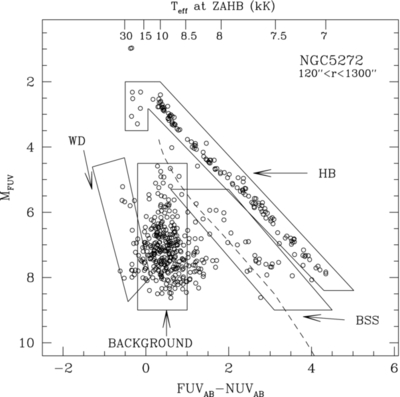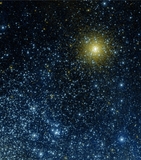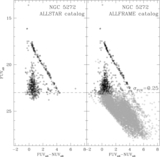Image Details

Caption: Figure 12.
Reddening- and distance modulus-corrected CMD of NGC 5272 (M 3), indicating the main populations that dominate the UV light of old stellar populations. The T eff scale on the top axis was obtained using Kurucz model fluxes ( http://kurucz.harvard.edu/grids.html) for the cluster metallicity, adopting surface gravities from Dorman et al. (1993) and is appropriate only for HB stars. Note the presence of gaps in the cluster horizontal branch, and an artificial clump of HB stars around (FUV–NUV) ~ 0.5, which is due to the strongly nonlinear color– T eff relation. The brightest and hottest cluster blue stragglers are clearly detected, 1–1.5 mag below the HB. Two candidate PAGB stars are visible at M FUV ~ 1 and (FUV–NUV) ~ −0.5. A few white dwarf candidates are also detected, but, at the GALEX resolution, it is very difficult to distinguish them from background sources. The latter are predominantly extragalactic.
Copyright and Terms & Conditions
© 2012. The American Astronomical Society. All rights reserved.












